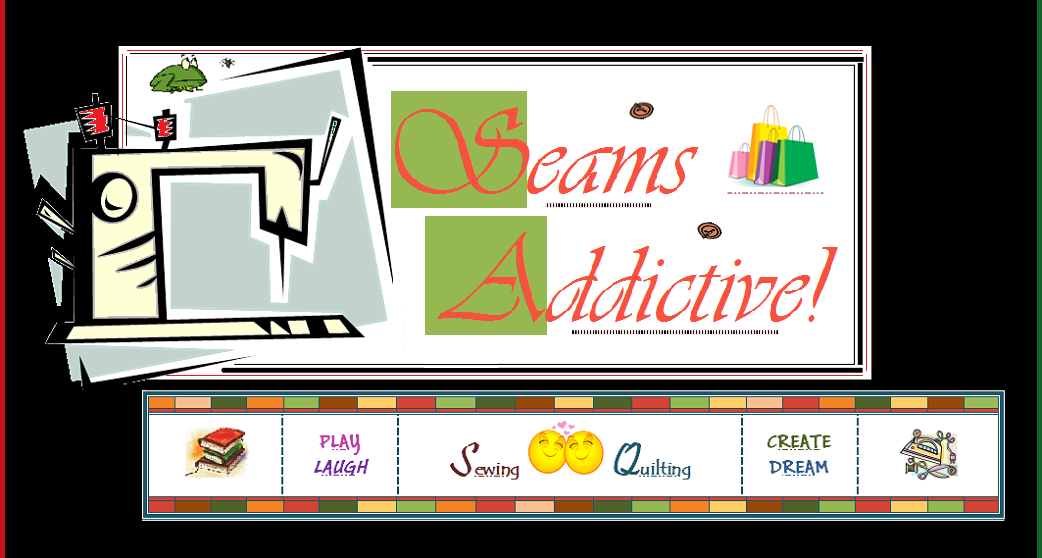I really haven't ever been loyal to one specific brand name; generally I use products from a variety of companies, as price and availability are two constants that determine my purchasing trends.
However, since I love working with fused applique I've ALWAYS used Steam-A-Seam fusible web. It was the product that was recommended and used in my first applique quilting class I took. It still is what I like using today; until... the company had manufacturing issues and the stores ran out of it.
THERE IS ONLY ONE DECISION TO MAKE:
Stop all applique work until it returns; or.. try another fusible web product, for now.
At the time, I was working on my Flag Quest project and it used a LOT of fusible web; thereby, depleting my Steam-A-Seam supply to mere scraps. Had I known ahead of time, I could of used another product for the larger pieces. But... that isn't how life dishes out opportunity, now is it?
After waiting several weeks to get to check another quilting store, I was faced with that opportunity. No Steam-A-Seam!! The product that was available was 805 Wonder-Under and as quilting must go on, I purchased four metres of the stuff; hoping I could work with it.
I came across a blog post that gave me hope and helped me feel it was going to be okay. (Sorry, I can't give you the link as I can't locate it again.) With this method, large pieces of fabric are fused and the paper is taken off before the appliques are created. This solves the issue of accidently fraying the applique pieces when taking off the release paper.
For me, this method is not workable, as I only want to fuse small individual pieces on a large variety of fabrics. I still did not think it would be the solution for my projects. Now, how to get those applique pieces to release from the paper?
My new project--a family tree quilt--has lots of tiny and odd shaped pieces; and if I was going to survive the applique process, I needed a solution to getting those pieces to release from the paper.
My Alternate Method: (Wonder-Under)
This transfer web works differently than my favorite fusible; and it didn't take too many times to "retrain" my brain to remember to do this one extra step.
THE EXTRA STEP:
Release one edge before cutting out the applique design.
Required is a loose edge to grip when tearing off the paper after the image has been fused; then you will be able to separate it successfully.
When the piece has been fused properly, it will lift easily. If the web seems to tear from the paper as you try this; then refuse as it hasn't melted properly onto the fabric. Cool, and try again.
Tip: If you still can't easily separate the paper from the fabric with your fingertips, use a seam ripper as it works well to get in between the paper and the fabric. Then if fraying results at this edge, which is outside the cutting lines, it won't ruin the applique piece.
Pull the paper back to separate it from the fabric, about 1/4" or so within the cutting lines. Then finger press it back down. Hold this piece in place and begin cutting out your design from this point. After the applique is completely cut out, lift this edge and gently pull off the release paper.
So, this is how I developed my plan:
DRAWING OUT THE IMAGES:
With this web, I allowed extra space between drawn images. This gave me extra white space outside my drawn lines after cutting the applique pieces apart. I thought I would need this space all around the design; however, it is most important to have extra on the edge you will pull to start releasing the paper.
FUSING AND CUTTING OUT THE DESIGN:
In this case, I could not get the paper to release, no matter what I tried. So my method was what actually worked.... Before cutting on the lines, remember to release one corner or edge of the applique. Then begin cutting out the piece from where you lifted the edge. This is easier to cut first as the rest of the applique is still held securely in place.
*******************
So with this worked out, I can actually say that my project is going very well. Would I go back to using Steam-A-Seam when it returns to my quilt shop, well, yes I would!! There are some other features that it has that I love.
Sometime, I'd like to do a review on several types of web to compare their features. This would help me know which products are best for certain projects. And, it certainly would be a good idea to have more options because running out of your favorite products is undesirable.
Hang in there and happy crafting.
















